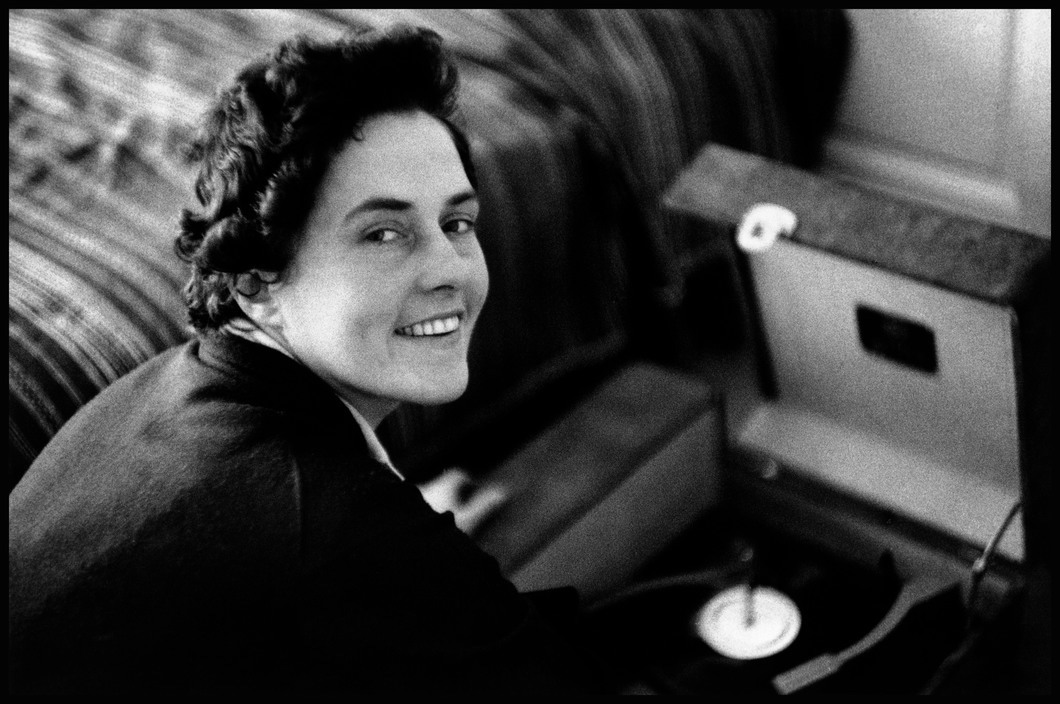For Morath, photography was “essentially a personal matter – a search for inner truth,” as she described it. The photographer travelled extensively, often alone, covering stories in Europe, the Middle East, Africa, the US, and South America for publications including Vogue and Paris Match. She also worked as a photographer on motion picture sets, including The Misfits (1960), where she met her second husband, playwright Arthur Miller. A significant portion of Morath’s work is devoted to black-and-white portraiture. Her subjects were artists, writers, fashion designers, actors, celebrities, anonymous passers-by, and even a llama named Linda, famously pictured with its head extending from a car’s window in New York. “If you’re one of her subjects, you hardly know your guard is down and your secret recorded until it’s too late,” said Philip Roth, the American novelist photographed by Morath in 1965.
Morath forged a photographic career for herself. However, it was one still greatly affected by gender inequality. At Magnum Photos, for instance, women remained in the minority, with Eve Arnold (1912–2012), Marilyn Silverstone (1929–1990), Susan Meiselas (1948–), and Martine Franck (1938–2012) gradually joining Morath as the agency’s earliest female members. Meiselas fondly remembers sitting next to Morath during Magnum Photo’s annual meetings. Reluctant to speak publicly, Morath would whisper into Meiselas’ ear.
Today, although female membership of Magnum Photos has increased, including its leadership, the agency is still predominantly male. Magnum Photos is not alone: across the photojournalism industry as a whole, women are still underrepresented and experience numerous barriers to full and equitable participation. From 2015 to 2018, for instance, the annual World Press Photo Contest surveyed 5202 of its entrants from over 100 countries. The resultant report The State of News Photography (2018) discovered 69 per cent of female respondents had faced discrimination in the workplace. Meanwhile, a follow-on paper revealed just 15 per cent of photojournalists today are women, a sobering statistic given the influence of news photography on our perception of current affairs.
